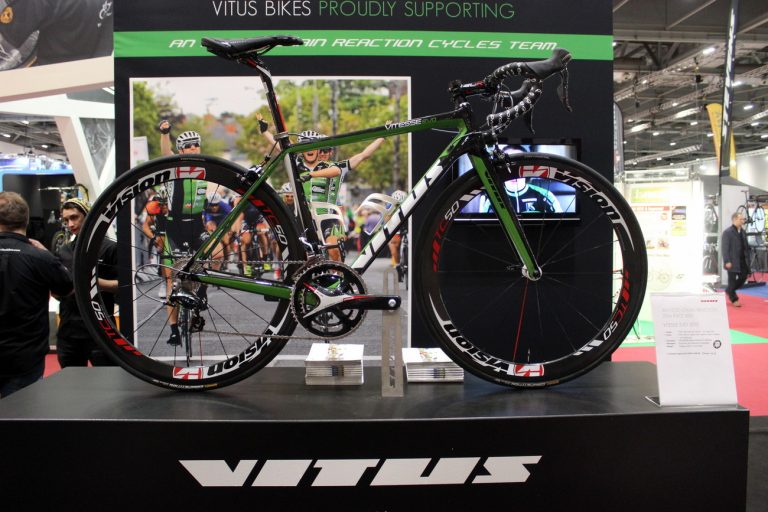Mudguards are the calling card of any winter bike and have served as the final piece in the jigsaw for RoadCyclingUK’s build project.
SKS Longboard guards, which offer comprehensive coverage front and rear, have been fitted to the Kinesis GF_Ti V2 frame, made from a 3Al/2.5V titanium alloy, which has served as the basis of our 2013-14 winter bike.

We’ve guided you through each step of the build process and after 250 miles in the saddle it’s time to offer some early impressions.
First of all, it’s a fine machine to behold, if we may say so ourselves. Very easy on the eye, with the beautifully finished, brushed titanium frameset and its striking hourglass headtube taking centre stage even against the backdrop of a dreary winter’s day.
The GF_Ti V2 is Kinesis UK’s long distance frame, designed for big miles in comfort, and titanium is a sensible choice for such a machine. It’s a material which, when in the hands of an experienced frame designer, combines respectable weight and stiffness with a generous amount of compliance, providing a helpful dose of each without one outgunning the other.
Comfort has always been titanium’s trump card but many carbon fibre and aluminium frames are now engineered to offer a high level of compliance. That said, Kinesis have used seatstays with a significant curve to help harness the inherent comfort offered by titanium and the frame does an excellent job of soaking up imperfections in the road. It’s a smooth ride and the GF_Ti V2 places great emphasis on getting the rider to their destination in comfort. It’s not a dull ride, however, and you still get plenty of feedback through the contact points.
The GF_Ti V2 is the second incarnation of the frame and Kinesis have sought to boost stiffness over the original by re-profiling the toptube with horizontal ovalisation, while the downtube has been bi-ovalised where it meets the headtube and bottom bracket.

It’s still not a super-stiff race bike and titanium lacks the immediate zip of carbon fibre, not least in this winter build – that’s noticeable on initial rides after a summer riding some of the best bikes on the market, as this job dictates. A little flex can be expected during out-of-the-saddle accelerations, but that’s the nature of ti and our machine holds a high cruising speed with ease. We’ll explore its potential further when it sheds its winter wheels and tyres for more exotic rolling stock come the spring.
With that in mind, to call our build a winter bike is to perhaps undersell a machine which has a £1,449.99 chassis at its heart. Still, the GF_Ti V2 isn’t a race bike, nor do Kinesis describe it as such, but a four-seasons machine with an adaptable personality (thanks in part to clearance for 28mm tyres and full mudguards, as well as rack mounts) which means it’s likely to be at home whether commuting, on winter training rides, tackling a sportive, riding an audax or touring. We’re looking forward to finding out whether that’s the case.
At the moment, in its winter bike guise, our machine is equipped with SRAM’s mid-range Rival groupset, which provides an excellent balance of performance and affordability. Fulcrum’s Racing 5 wheels are dependable entry-level hoops and a popular option at this time of year and our early miles suggest that Continental’s new 25mm Grand Prix GT is a welcome addition to the range as a winter-ready training tyre, offering good levels of grip and, as far as we can say after 250 miles, decent puncture protection.
This started out as a winter bike project but given the GF_Ti V2’s pitch as a four-seasons machine, we intend to use it as such. Only then will we discover how it fares away from the constraints of cold, wet winter miles, so stay tuned for further updates.






